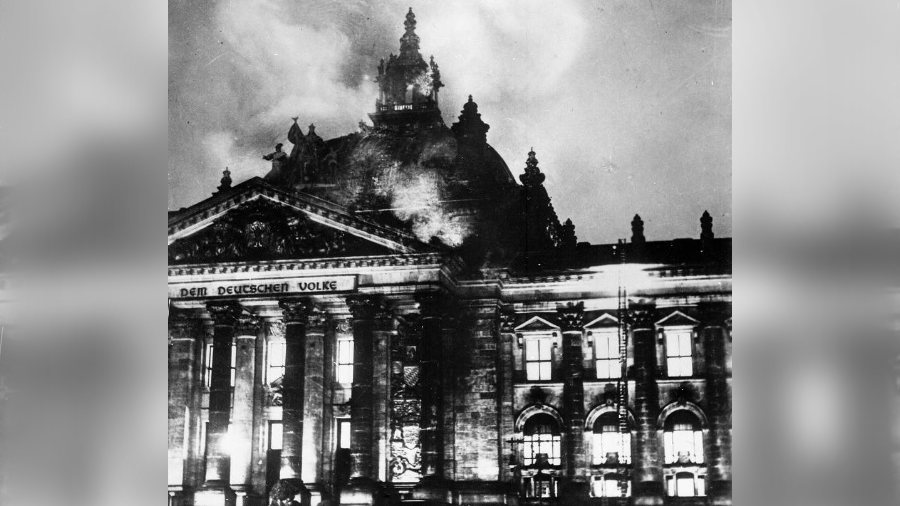Project Veritas Torches The New York Times and Explodes the January 6 Narrative
Serious journalists know that our oligarchs used Jan. 6 as a Reichstag fire, to target political dissidents.

A Pulitzer prize-winning New York Times reporter has been caught in a video by the conservative group Project Veritas admitting his colleagues vastly exaggerated the danger of the election integrity protest on Jan. 6.
The reporter, Matthew Rosenberg, also called his colleagues names that questioned their courage and manliness.
January 6 Was in Fact “No Big Deal”
Rosenberg, the national security correspondent for the New York Times, said the media’s coverage of the Capitol riot was “overblown” and that the events of Jan. 6, 2021 were “no big deal,” according to undercover video released Tuesday by Project Veritas.
In print, Rosenberg and his colleagues have described the claim that there were FBI plants instigating the protestors outside of the U.S. Capitol a year earlier as a “reimagining” of the “attack.” But in the Project Veritas video, which appears to have been recorded without his knowledge, Rosenberg paints a different picture. Here he admits that “there were a ton of FBI informants amongst the people who attacked the Capitol.”
Could These Reporters “Man Up” Already?
“I know I’m supposed to be traumatized,” Rosenberg said in the video, “but like, all these colleagues who were in the (Capitol) building and are like, ‘Oh my God it was so scary!’ I’m like, [expletive] off!’”
Rosenberg said the Times was “not the kind of place where I can tell someone to man up,” but he said “I kind of want to be like, ‘dude come on, you were not in any danger,’” according to the video. “These [expletive] little dweebs who keep going on about their trauma … . Shut the [expletive] up.” Rosenberg then used a profanity to indicate that his colleagues at the Times lack courage.
“They were making it too big a deal,” Rosenberg said of the political left. “They were making this some organized thing that it wasn’t.”
Breathless Accounts of the GOP’s “Far Right” Transformation
Jeremy Peters, another New York Times reporter, recently published Insurgency: How Republicans Lost Their Party and Got Everything They Ever Wanted. The book argues that the Republican party has changed in recent years, becoming a far-right collective under Trump. At the same time it ignores evidence that at the same time Democrats have migrated to the radical left.
Thus, Peters fetishizes the January 6 breach of the U.S. Capitol while ignoring the most extreme actions of Democrats — like bailing out violent Antifa and Black Lives Matter rioters. Or the Stasi-like attack on Brett Kavanaugh during his nomination for the Supreme Court, which only receives a few fleeting pages at the end of Insurgency.
Like many liberals, Peters obsesses about January 6. He describes the atmosphere around the crowd as having “an almost bestial energy.” He also claims that “Trump didn’t bring anything to the Republican party that wasn’t already there.”
Which Party Drifted to the Extreme?
The truth is, the Times has it exactly backwards. It is liberalism that has drifted into insanity, not conservatism.
This is evident in James Piereson’s remarkable book, Camelot and the Cultural Revolution: How the Assassination of John F. Kennedy Shattered American Liberalism.
Piereson argues that in the 20th century up until the 1960s, liberalism was largely a doctrine of maintaining government programs and slowly expanding freedom and equal justice for all people. Institutional liberalism was not radical. Adlai Stevenson and John F. Kennedy liberalism had little overlap with the Communist-infiltrated progressive movement. Indeed, radicals on the American left derided pro-American liberalism as “conservative.”
A Bit Insipid
This liberalism, argues Piereson, was competent, patriotic, often anti-communist, and accomplished good things. Still, over time it became such a dry and programmatic philosophy that it was missing something vital. Namely, the human soul, the thrill of a life in God, even just plain fun. Liberalism saw little role for faith and no room for the complexity, excitement, unpredictability, and tragedy of life. The worldview was not revolutionary but … managerial.
This is why 1950s liberalism was criticized by the left as much as the right. Piereson cites the liberal intellectual Lionel Trilling, and his 1950 book The Liberal Imagination. Trilling wrote: “The world is a complex and unexpected and terrible place which is not always to be understood by the mind as we use it in our everyday tasks.” As Piereson elaborates, “liberalism … because of its programmatic focus and near exclusive emphasis on politics, lacks an imaginative dimension that might give it a better sense of the richness and complexity of life.”
One Day in Dallas
When John F. Kennedy was killed, liberalism went crazy. Unable to face the fact that Kennedy was murdered by a Castro-loving Communist (Lee Harvey Oswald), liberalism fell into conspiracy mongering. Its managerial calm gave way over time to a violent, anti-religious, paranoid and utopian New Left frenzy. Thus was forged the world view of our Stasi media and socialist politicians.
That’s why those people were so ruthless and propagandistic in dealing with the protestors of January 6. Piereson argues we now have “punitive liberalism.” That is to say, punishing liberalism. America was to blame for Kennedy’s death, and traditional Americans should be shamed and made to pay.
Punitive liberalism has become the religion of modern liberals. Liberalism today, in its censorious cancel culture, race obsession and policing or speech, is completely malicious.
Project Veritas has just exposed its snarling face.
Mark Judge is a writer and filmmaker in Washington, D.C.







